Published Aug 23, 2021
I Was a Theme Park Star Trek Character
One fan got to live the Star Trek dream at a Paramount theme park
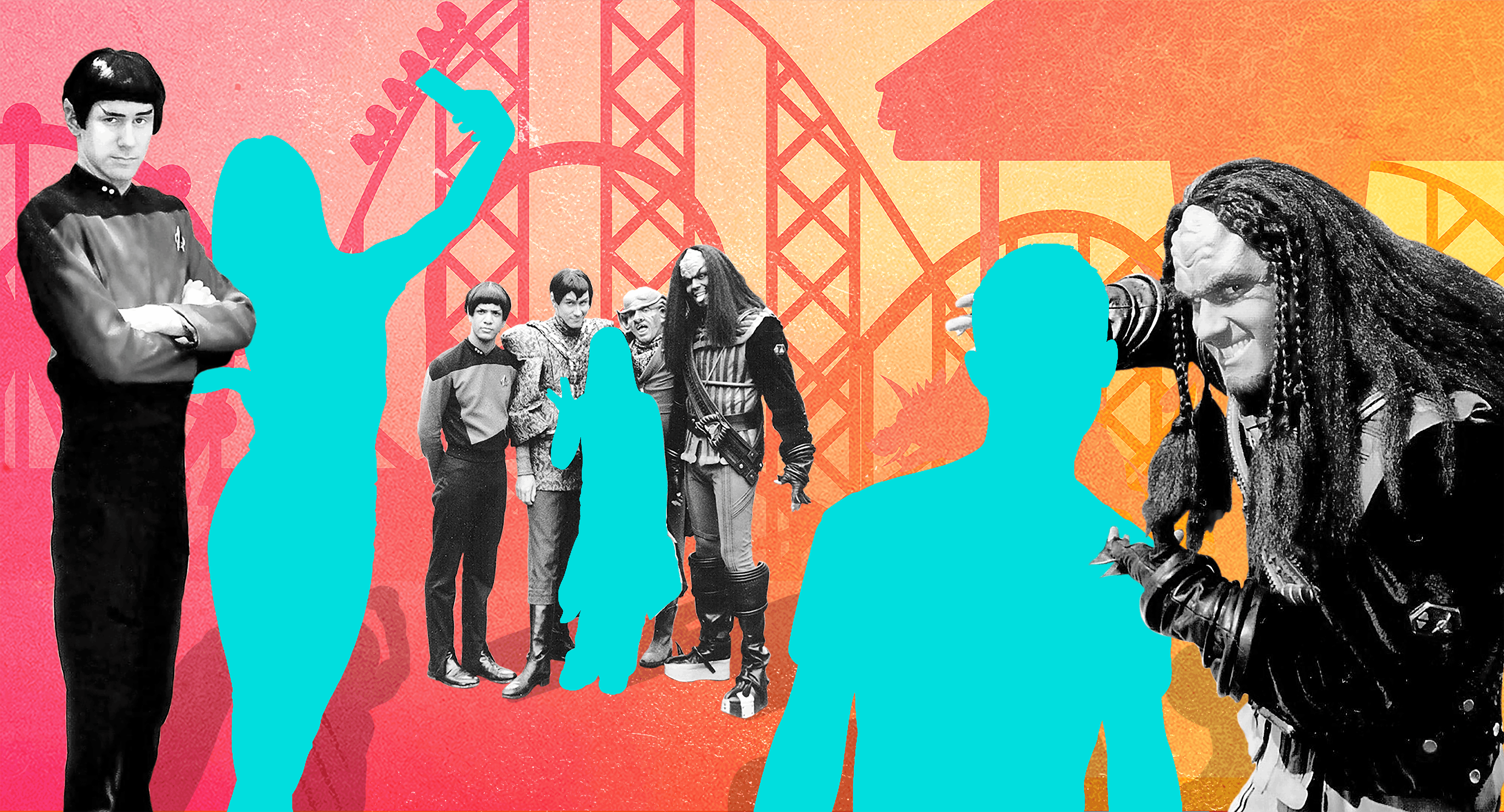
Robert DeHart
"It's not safe out here. It's wondrous, with treasures to satiate desires both subtle and gross; but it's not for the timid." Q - Q Who?
In the mid-90s, as I was preparing to start college, I made the decision to study cinema in San Francisco, but was fairly introverted and figured I'd learn the technical aspects of filmmaking and go into behind the scenes production. However, I needed a job to pay expenses and keep me active on weekends, and through the summer. Coincidentally, someone in one of my classes mentioned that the local theme park, Paramount’s Great America, was casting performers for their 1994 season. I’d done some theatre in high school, so I wasn’t at a loss in front of a crowd, so over the course of the week I gathered up my courage, drove down to Santa Clara, and auditioned.
One heavily improvised monologue later, I wound up being cast as a walk-around Star Trek character, a job I kept from 1994 -1999.
As for many fans, Star Trek was an important part of my life growing up. I’d watched The Original Series re-runs with my dad, I sat in front of the living room TV holding my breath the evening The Next Generation premiered, and I recorded and re-watched Deep Space Nine over and over again when it joined the family. But I never thought in my wildest dreams that I’d spend five years playing Vulcans, a Romulan, and even a Klingon at an amusement park, nor that it would completely change my goals, values, direction, outlook on life in general.
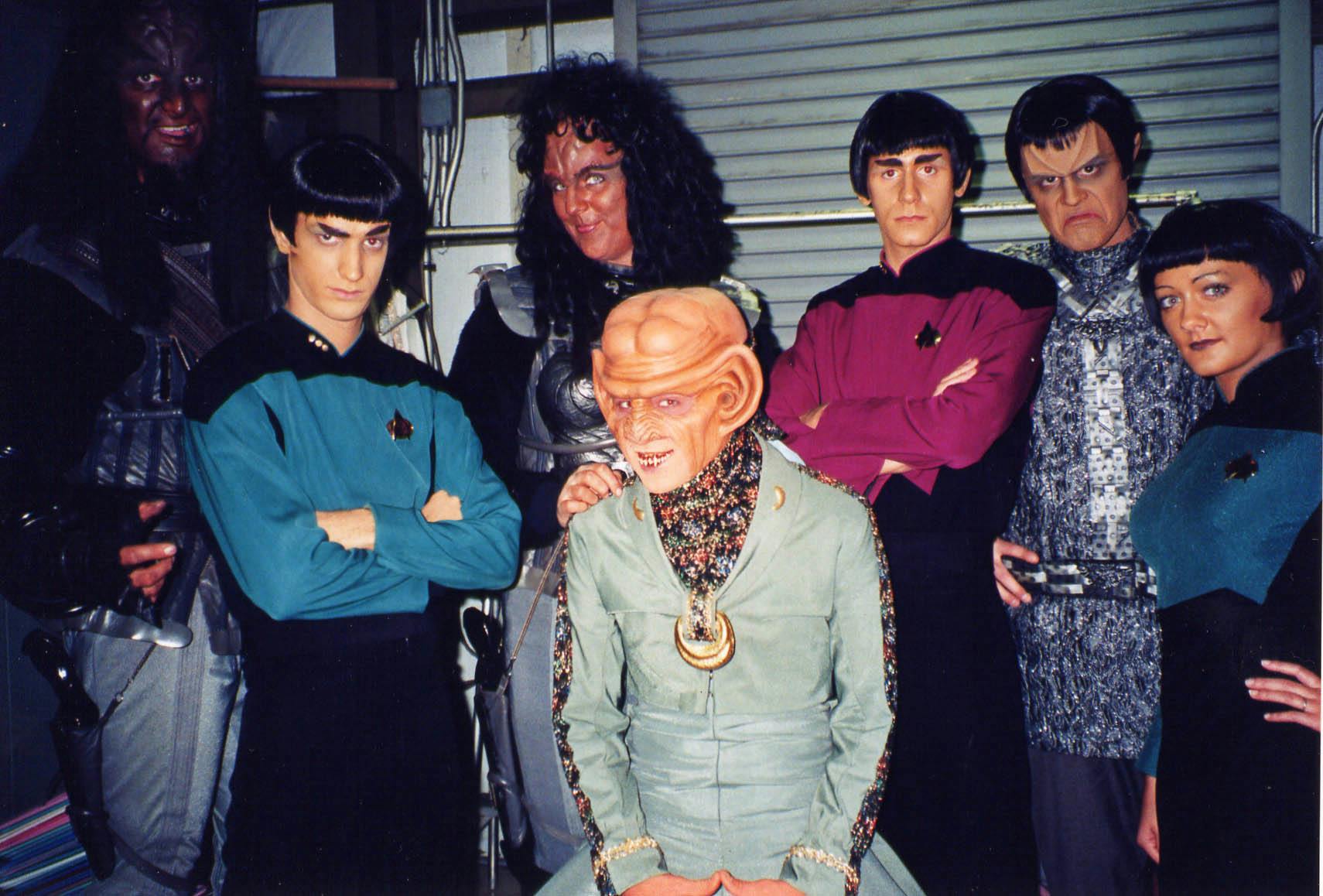
StarTrek.com
In 1993 Paramount Pictures acquired five theme-parks — four in the United States, one in Canada — in hopes of competing with Disney and Universal. The original goal was to have movie themed rides and lands accessible to people across the country. It was an extravagant idea, converting many of these local amusement parks to higher end fare with much more recognizable properties involved.
The Star Trek Actors Program originally featured Vulcans, Romulans, Klingons, and Bajorans; Ferengi were added for the ‘95 season. None of the performers imitated on-screen characters. There was no ‘Spock’, ‘Kirk’, ‘Picard’, or ‘Worf.’ We were allowed to create our own unique personas under the premise of a joint culture mission that had traveled back in time to ‘observe the past’ using the theme park as our cover. We took the stance that we had journeyed back to figure out how Gene Roddenberry had guessed the future so correctly. The whole ploy was very meta, before meta was a thing.
A professional make-up artist who assisted Michael Westmore on the shows was brought in to train us in applying our prostheses on a daily basis. We were given show quality stuff, too, from the Vulcan LN-1 make-up (Leonard Nimoy 1, designed specifically for Spock), to the B-Grade prosthetics (A-Grade were worn by Quark and Worf, B-Grade were given to recurring characters like Rom, and C-Grade were the full face masks for background, non-speaking aliens). I learned it was easiest to apply Klingon, just face make-up with beard, and a bumpy head attached to a wig. Becoming a Romulan was definitely the hardest. I literally had to latex the ridged forehead right below my eyebrows, glue on ears, then hold everything in place with a wig that I couldn’t take it off until the end of the day. And the sweating… so much sweating.
After makeup school followed two weeks of intense improv training, where we got into the minutia of show details, the social-political stances of the different races, and how we’d all interact on a daily basis. My homework was watching multiple episodes of TNG and DS9! I knew the shows very well up to this point, however, none of this could prepare me for what it was like on the street in front of the public. Some of us had deep characters with elaborate backstories. Some of us didn't. Some of us were hardcore Trekkies, some weren't. But we were together! An away team trapped in the theme park.
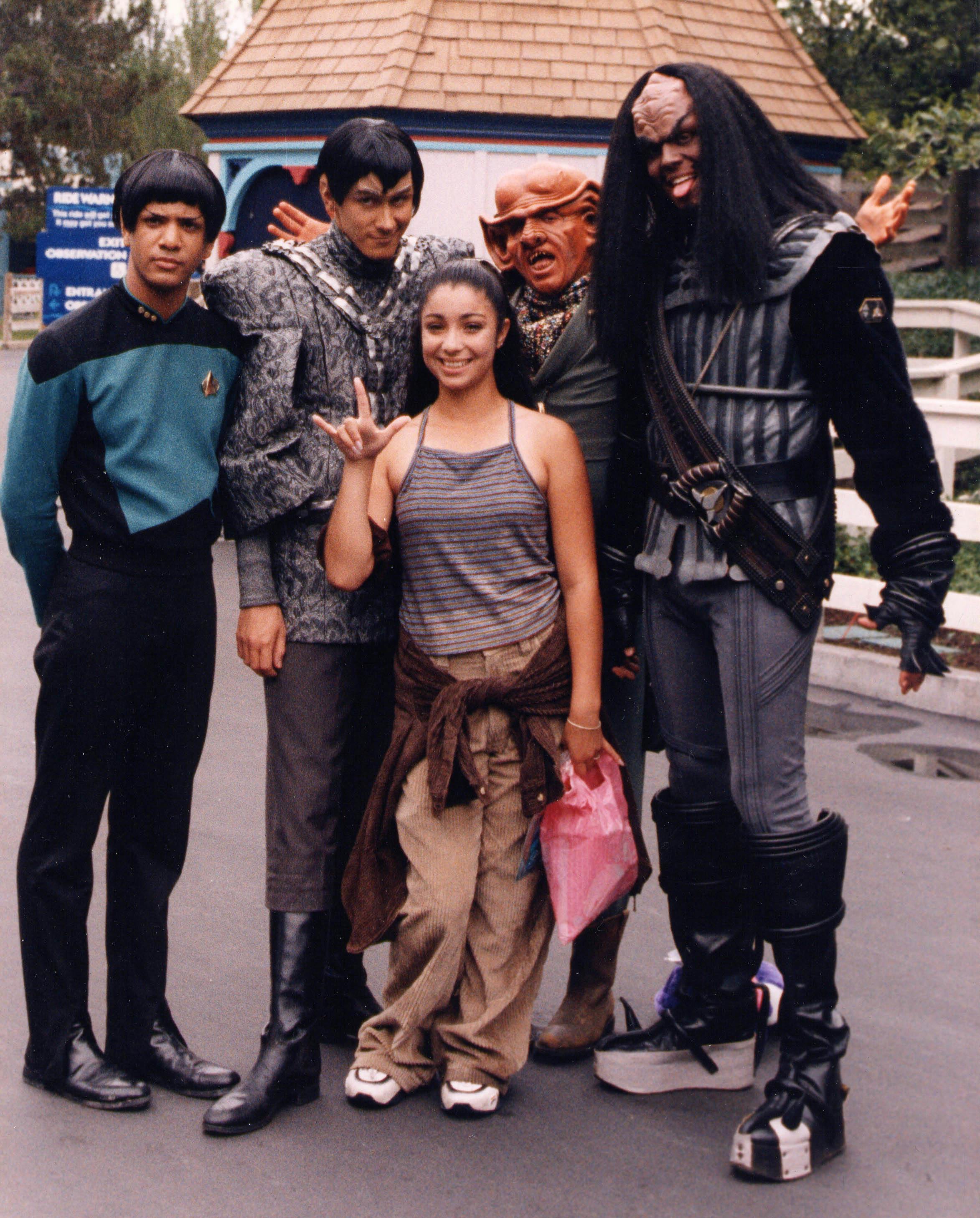
StarTrek.com
There was no actual ‘Star Trek Land’ in the park, and the one store that sold exclusively Trek merchandise did not provide visitors with any explanation as to why we costumed characters were wandering the park. For our part, we were under strict orders from management to never break character in front of the guests, under any circumstances. We did our best to follow the rules as massive amounts of patrons from all over the world would pose with us, take our pictures, tug on our costumes and ears, and worst of all, call us ‘fake.’
One day, while playing my Vulcan character Sevlok, I kept a perfectly straight face while a guest was determined to make me laugh. When he finally left, I turned around, walked right into a tree which pulled my wig right off my head. Logically, I quickly stuck my head in a nearby bush and — in a measured tone — called for help. A Bajoran and a Romulan cleverly put a box over my head to get me backstage. Decorum in the face of adversity.
As Klingon Kro’Vat I got to host the IMAX movie screenings in the park. Before the show I created a game called ‘Tribble Ball,’ in which we’d toss a tribble around to audience members. Once they’d passed that test, it was time for ‘Brick Ball,’ but a Ferengi would always stop me before I’d get to hurl the chunk of cement into the crowd.
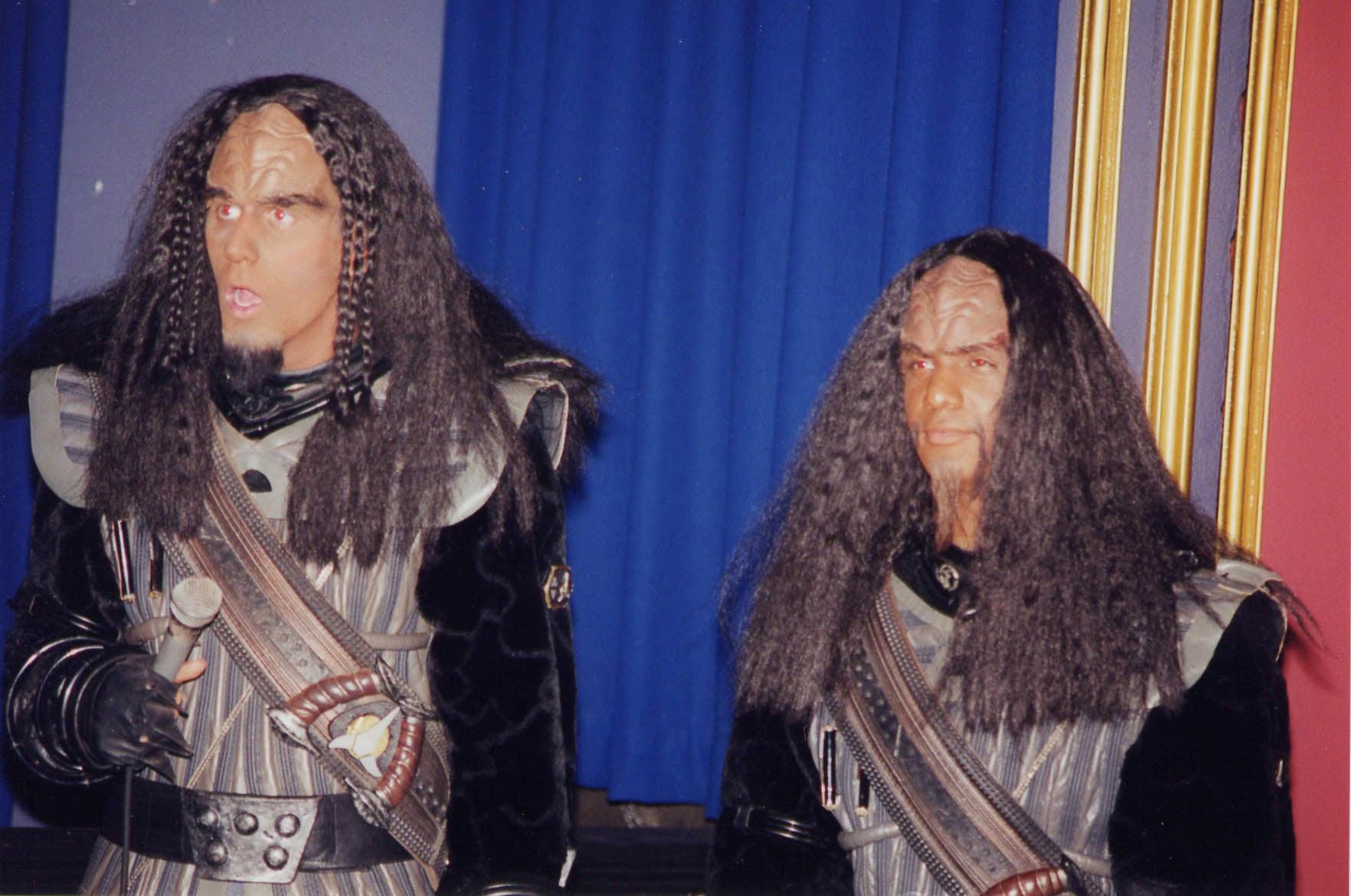
StarTrek.com
Then, as nefarious Romulan Ambassador Ta’Vork, I once set up a day-long scenario in which a Ferengi accomplice and I kidnaped another high-ranking Ferengi. We left clues throughout the day that the Klingons and Vulcans would get guests to help them solve, leading to a grand showdown where the Ferengi was freed, I was betrayed by my sidekick, and carried off to the brig with a box over my head. Full circle.
I got to be Star Trek every day. I wore the outfits, put on the make-up and worked for longer stretches of time than even the actors on the show did. Being this close to the characters had a profound effect on me — from the high points, like meeting the cast of Voyager during a promo event and being on sets from Star Trek: Generations during the traveling Earth Tour, to the low points of standing in the pouring rain dressed as a Klingon holding a Great America branded umbrella. Any last remnants of shyness were gone. It shaped what I chose to study, write, and produce. It's led to lifelong friends and relationships. If not for that job, I would have probably stayed in the Bay Area and worked at an Internet start-up a friend was trying to get together (which ended up going nowhere, by the way).
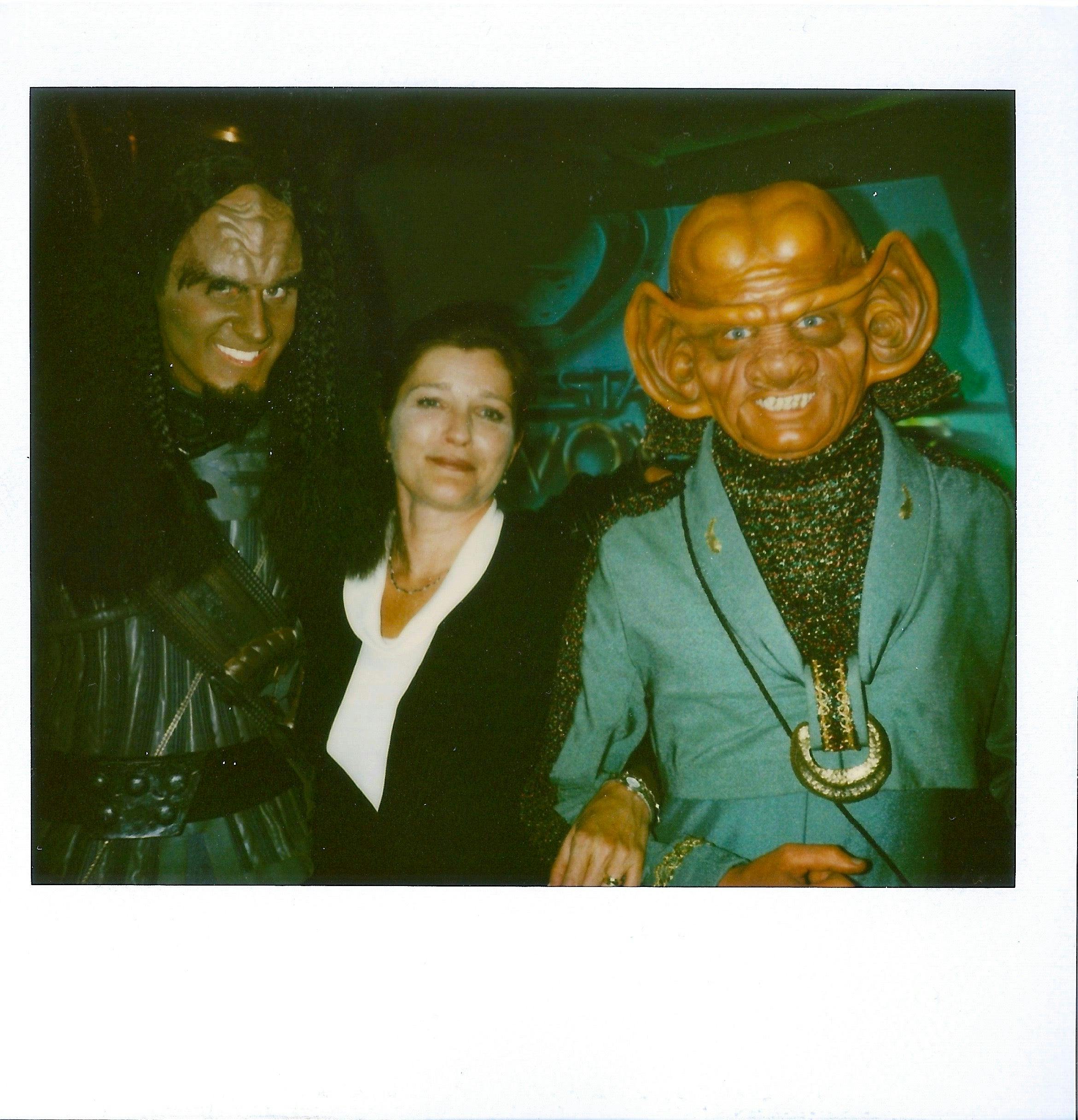
StarTrek.com
Instead, it stirred me to leave San Francisco after college and move to Los Angeles. I made the leap to professional actor and experienced reasonable success booking commercial roles. My creative writing endeavors are in the sci-fi/fantasy genre, and the bulk of my non-fiction writing has been mostly Star Trek-related. The knowledge I gained gave me the courage to inquire and write for the old Star Trek Communicator magazine, as well as this very website.
I credit who I am today to that job, and that job existed because of Star Trek. I got to play in the Federation’s universe daily while inhabiting iconic aliens. Even though it happened in the era before cell phones, I was in a lot of pictures. If you visited Great America at any time when Paramount owned it, chances are I’m in one of your photo albums. And to this day, whenever I greet someone, I still have the urge to give the Vulcan hand salute and say, “Live long and prosper.”
Star Trek Kids Say the Darnedest Things at STLV
Science fiction enthusiast David Maddox (he/him) has written for various SF sites as well as the Star Wars Insider and the Star Trek Communicator. He spends his time working on screenplays and stories, acting on stage and screen and giving tours at Universal Studios Hollywood. Follow his rarely used Twitter account @TaVork.

